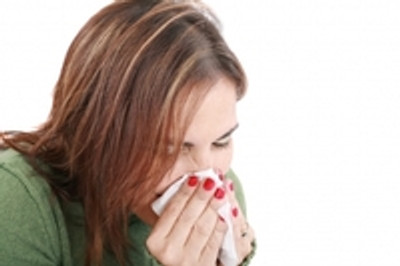Tips for Fighting Summertime Allergies
Bethaney Wallace on 7th Jul 2014
Even though spring has passed, along with some of its harshest irritants, it doesn’t mean that sufferers are in the clear. With all of the plants and ongoing particles that are floating in the air, sneezing, eye watering, and itchy throats are still heavily in play. In fact, depending on the allergen itself, side effects can actually be worse in warmer months. Because these substances have been around for a longer amount of time, their levels can be increased and therefore host a stronger hold on those to whom they have a negative effect. This is especially true for items like pollen, which is produced for months on end, and then blown throughout the air. (Even worse for windy states, especially in the Midwest.)
While, in the winter, allergens are frozen and essentially removed from breathing air, in the spring and summer, microscopic materials have been floating around since the last frost. Allowing them to get stronger and more intense over time.
However, just because allergies are coming in stronger than ever, doesn’t mean there aren’t solid ways to avoid their effects. From cleaning more thoroughly to avoiding days that come with the most pollen or mold, you can work toward creating an environment that is almost completely allergy free.
Start by:
Dusting and Vacuuming
Whether you hire someone to come in and help with chores, or take a little extra time to perform the tasks yourself, regular cleaning can help remove some of the harshest of allergens. This includes dusting, vacuuming, and washing rugs, sheets, and other fabrics throughout the house. Items that are cleaned the least often will obviously attract the highest amount of allergens, especially those which are porous. Fabrics that can’t be washed, such as couches, or can’t be washed often, like carpets, can also be vacuumed. For those with severe side effects, consider a carpet shampooer or steamer to help disinfect these regularly used items.
Switching to Rubber Mats
Rather than hosting fabric rugs outside of your home (or inside), opt for rubber or plastic materials that can easily be hosed off. Wiping shoes – or even taking one’s shoes off – at the door can greatly reduce the number of allergies that enter into the home. However, fabric rugs can absorb germs, allowing you to track them into the house each and every time you walk inside.
Eating Honey
Consuming local honey can be an easy, natural way to boost your immune system. Because it was made in the area, the bees are also exposed to the same allergens. (Likewise, when on vacation or when traveling, you should opt for honey that is local to that area.) Therefore, eating their honey can allow you to build up a tolerance to said substances. Talk with your doctor to follow up with frequencies and amounts to avoid exposing yourself to too many substances too quickly. Many will recommend a daily regimen of a small amount so that the body can slowly build up its defense system against these local allergens.
Using Air Purifiers and Filters
One of the easiest ways to remove particles from the air is to host an air purifier. These come in all sizes and efficiency levels, and allow for the air to be properly cleaned with little to no additional work. Some might require its filter to be changed, or for water to be adjusted, etc., but for the most part, these machines work to literally clear the air all on their own. Place one by the door or window (for the brave allergy sufferers who actually open their windows) in order to remove as many particles as possible. Smaller models can also be kept in the bedroom so you’re sure to keep the nighttime air fresh all throughout the night.

